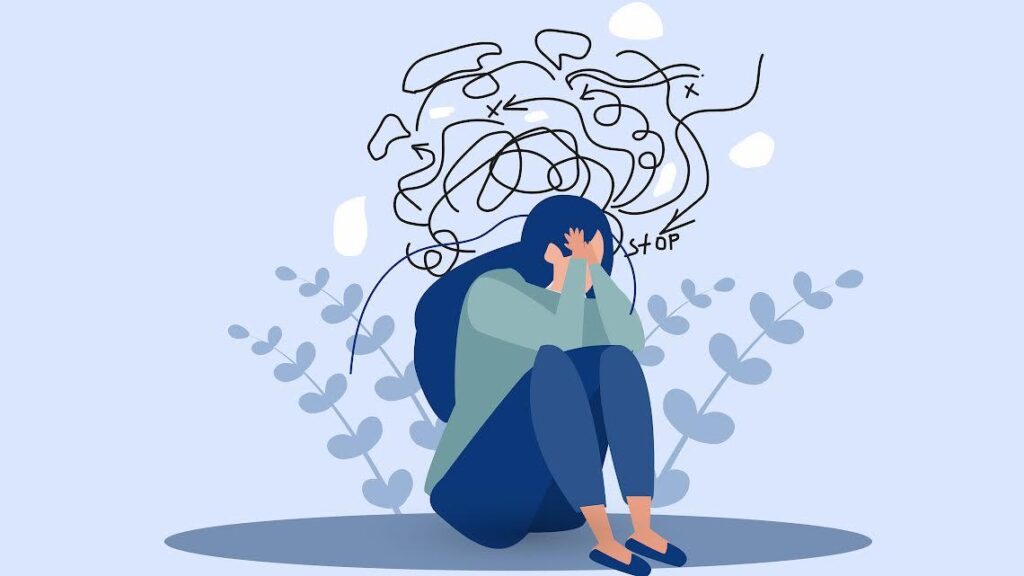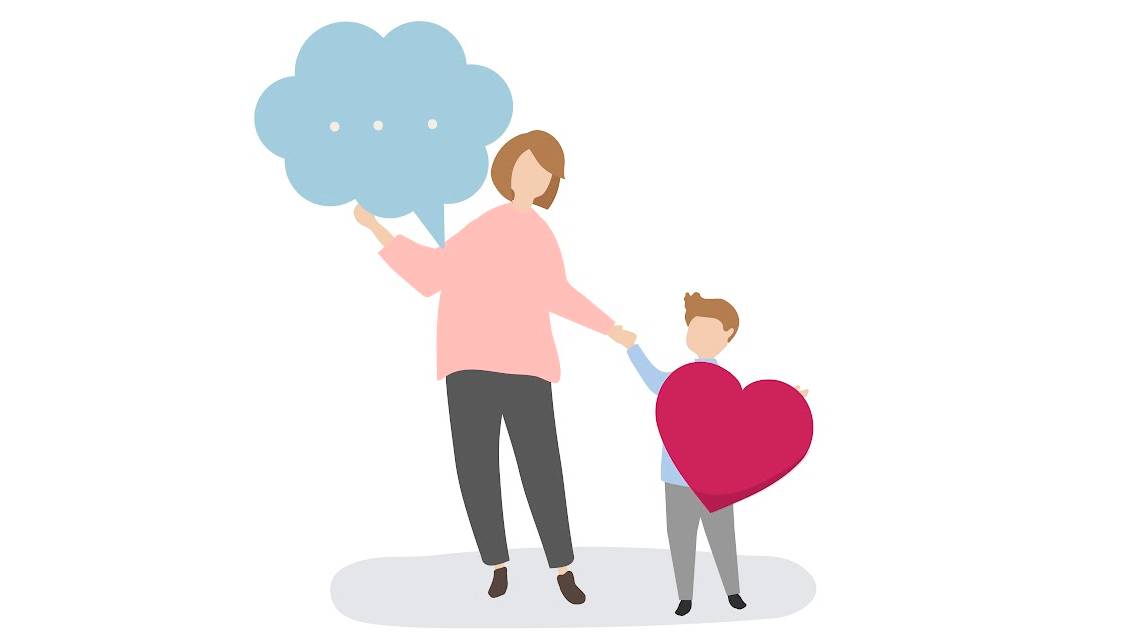
According to the American Psychological Association, “Anxiety is an emotion characterized by feelings of tension, worried thoughts, and physical changes.” As this definition rightly mentions, anxiety is more than just an emotional state. It involves other components such as the cognitive or thinking and physiological aspects.
Anxiety disorders are characterized by persistent and excessive fear or worry, often accompanied by behavioral changes that interfere with normal daily functioning.
Fear and Anxiety
Fear and anxiety are often mistaken as the same, but they are distinct yet interrelated experiences. Fear is a cognitive assessment of a real or perceived threat, involving an intellectual appraisal of potential danger in a given situation. It is future-oriented, as individuals fear the possibility of an unwanted or catastrophic event occurring.
Anxiety, on the other hand, is an emotional and physiological response to fear. It manifests as a persistent sense of unease accompanied by physical symptoms such as heart palpitations, sweating, trembling, and muscle tension.
While fear arises in response to a specific threat, anxiety is the prolonged distress that follows, even in the absence of immediate danger. Essentially, fear triggers the perception of a threat, while anxiety is the emotional and bodily reaction to that perception.
Types of Anxiety Disorders
Anxiety disorders come in different forms, each affecting people in unique ways based on what triggers their fear or worry and how they respond to it.
Generalized Anxiety Disorder (GAD)
People with Generalized Anxiety Disorder (GAD) experience constant, excessive worry about everyday things, even when there is little or no reason to be concerned. This worry can feel overwhelming and difficult to control, affecting daily life. Adults often stress about work, health, or finances, while children may worry about their school performance or personal abilities.
Separation Anxiety Disorder
This disorder involves an intense fear of being away from home or loved ones. People with separation anxiety may feel extreme distress when apart from their attachment figures and constantly worry about their safety. This fear can make it difficult to go to school, work, or even be alone for short periods.
Social Anxiety Disorder (Social Phobia)
Social anxiety is more than just shyness; it is an intense fear of being judged, embarrassed, or humiliated in social situations. Whether speaking in public, meeting new people, or even eating in front of others, the fear can be so overwhelming that people avoid these situations altogether, leading to isolation.
Selective Mutism
Selective mutism occurs when a person, usually a child, is unable to speak in certain social settings, even though they can speak normally in others. This can cause significant difficulties in school or social interactions, as their silence is not due to stubbornness but deep anxiety.
Specific Phobia
This type of anxiety involves an intense, irrational fear of a specific object, situation, or activity such as flying, heights, animals, or medical procedures. The fear is so strong that it leads to avoidance, making daily life harder if the feared object or situation is commonly encountered.
Agoraphobia
People with agoraphobia fear being in places or situations where escaping or getting help might be difficult such as crowded areas, public transport, or open spaces. This fear can lead to avoiding many everyday activities and, in severe cases, even staying indoors most of the time.
Panic Disorder
Panic disorder is marked by sudden and intense panic attacks, which can feel like a loss of control or a medical emergency. Symptoms include a racing heart, dizziness, shortness of breath, and an overwhelming sense of doom. These attacks can happen without warning or be triggered by certain situations, leading to a fear of when the next one might occur.

Symptoms of Anxiety
Anxiety manifests in various ways, affecting thoughts, emotions, physical well-being, and behavior.
Cognitively, it often brings persistent worry, fear, or an ongoing sense of dread, making it difficult to concentrate or slow down racing thoughts. Many individuals experience catastrophic thinking, assuming the worst will happen, or struggle with intrusive, unwanted thoughts that feel overwhelming. It can also create a sense of detachment or unreality, making the world seem unfamiliar or distant.
Emotionally, anxiety may lead to heightened irritability, sudden mood swings, or an overpowering sense of being overwhelmed. Some individuals feel constantly on edge, while others experience emotional numbness or detachment from their surroundings.
Physically, anxiety can manifest as muscle tension, a tight chest, a racing heartbeat, or shortness of breath. Dizziness, digestive issues such as nausea or diarrhea, excessive sweating, and disrupted sleep patterns are also common. Chronic anxiety can leave a person feeling exhausted, as the body remains in a heightened state of alertness, depleting energy levels.
Behaviorally, it may cause avoidance of anxiety-inducing situations, difficulty making decisions, or heightened sensitivity to criticism and rejection.
Simple Ways to Soothe Anxiety
When anxiety takes over, it can feel overwhelming. But small, simple actions can help ground you and bring a sense of calm. Here are a few techniques to try:
- Squeeze a Ball – Keep a small stress ball nearby. Hold it and notice its texture smooth or rough? Soft or firm? Now, squeeze it in a steady rhythm: 1-2-3-4. Releasing the tension in your hand can help release tension in your mind.
- Untangle the Tangled – Take a tangled necklace, earphones, or bracelet. Take a tangled necklace, earphones, or bracelet. If none are tangled, coil one on purpose. Now, slowly work through the knots. Just like your thoughts, things may feel messy at first, but with patience, they loosen. Focus on the process, not the rush.
- Square Breathing – Breathe in for four seconds, hold for four, breathe out for four, and hold again for four. This gentle rhythm signals your body to slow down and relax.
- Diaphragmatic Breathing – Place one hand on your belly, the other on your chest. Breathe in deeply, feeling your belly rise while your chest stays still. Exhale slowly, noticing your belly fall. This deep breathing helps calm your nervous system.
- 8-4-7 Breathing – Exhale through your mouth for eight seconds, inhale through your nose for four, and hold your breath for seven. Repeat a few times. This pattern naturally slows your heart rate and quiets your mind.
- Worry Time – Instead of letting worries take over all day, set a “worry time” where you allow yourself to think about them. When anxious thoughts pop up, remind yourself, Not now, I’ll deal with this later. This helps contain worry rather than letting it control you.
Even the smallest moments of mindfulness can create space between you and anxiety. Try these out and see what helps!
Anxiety disorders can feel overwhelming, but understanding them is the first step toward managing their impact. Recognizing the symptoms, understanding different types of anxiety disorders, and using simple coping techniques can help regain a sense of control and stability. If it becomes too difficult to handle alone, seeking professional support can provide guidance. Remember, anxiety is manageable, and you are not alone in this journey.
Photo Credits:
First image: freepik
Second image: freepik
References
American Psychiatric Association. (2013). Diagnostic and statistical manual of mental disorders (5th ed.).
Beck, A. T., Emery, G., & Greenberg, R. L. (2005). Anxiety Disorders and Phobias: A Cognitive Perspective.

Sakshi
About the author
Sakshi is a clinical psychologist with a deep passion for understanding human behavior, a strong drive for research, and a keen eye for psychological intricacies. Committed to continuous learning, she seeks to explore every facet of psychology, from theory to practice, to better support and empower individuals. With a curiosity that fuels her pursuit of knowledge, she strives to bridge the gap between research and real-world applications, making psychology more accessible and impactful.
Recently Added
Virtual Reality (VR) is the use of various technologies to digitally simulate or recreate an environment in which an observer can realistically …
Parental mental health plays a monumental role in a child’s social, emotional, behavioural and psychological development. Parents and caregivers are central to …
Cognitive behavioral therapy (CBT) was initially developed by Aaron Beck in the 1960s and it is based on the cognitive model of …




